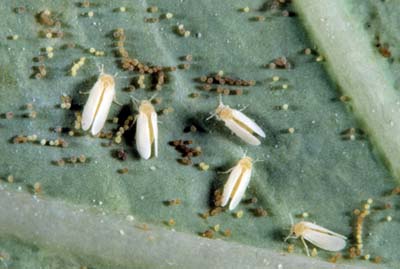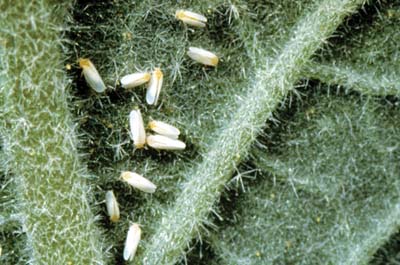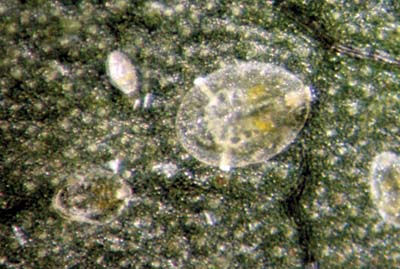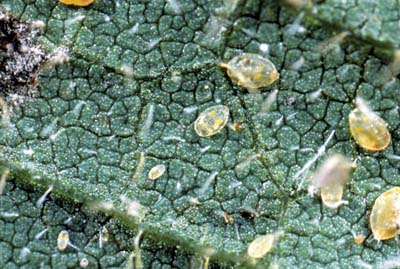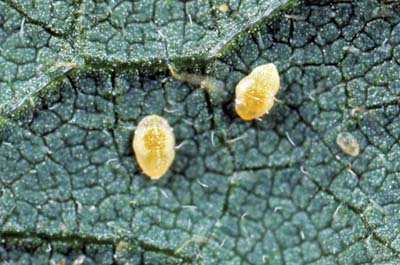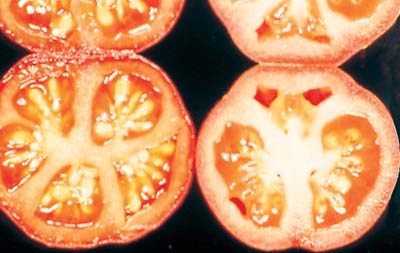Silverleaf Whitefly, Bemisia argentifolii
(Hemiptera: Aleyrodidae)
The silverleaf whitefly is primarily a pest of cultivated plants and vegetables in the southern United States. It may naturally be found as far north as North Carolina. Whitefly eggs are oval in shape and are pearly white when first laid, later turning brown. The last nymphal stage is also known as the redeye stage because of the nymph’s red eyes. The nymph is usually yellow in color. The adult emerges through a t-shaped slit in the “skin” of the last nymphal stage.
The silverleaf whitefly feeds on over 500 species of plants in 75 families. It is a major pest of tomato, peppers, squash, cucumber, beans, eggplant, watermelon, and cabbage. It causes damage to plants in several ways. It can cause plants to be less vigorous, causes irregular ripening of tomato fruit and other disorders such as silverleaf of squash, and can transmit multiple viruses, including the devastating tomato yellow leaf curl virus. It also produces a sticky excretory waste called honeydew. The honeydew acts as a substrate for sooty mold. The silverleaf whitefly can be controlled culturally by the removal of crop residues, crop free periods, the use of barrier crops, UV absorbing plastic films, colored and reflective plastic mulches, and host plant resistance. Biological control may also be used to provide control in certain situations. Biological control agents include parasitoid wasps and general predators. Chemical control is difficult because adults and immatures infest the lower surface of leaves that are difficult to reach with insecticides. Systemic insecticides are the most common means of control, but insecticidal soaps and oils may also be used.
Images
To save the Web-optimized images shown below to your hard drive:
PC users: right click to "Save Picture (or Image) As..."
Mac users: click and drag to your desktop.
Copyright © 2005 University of Florida
